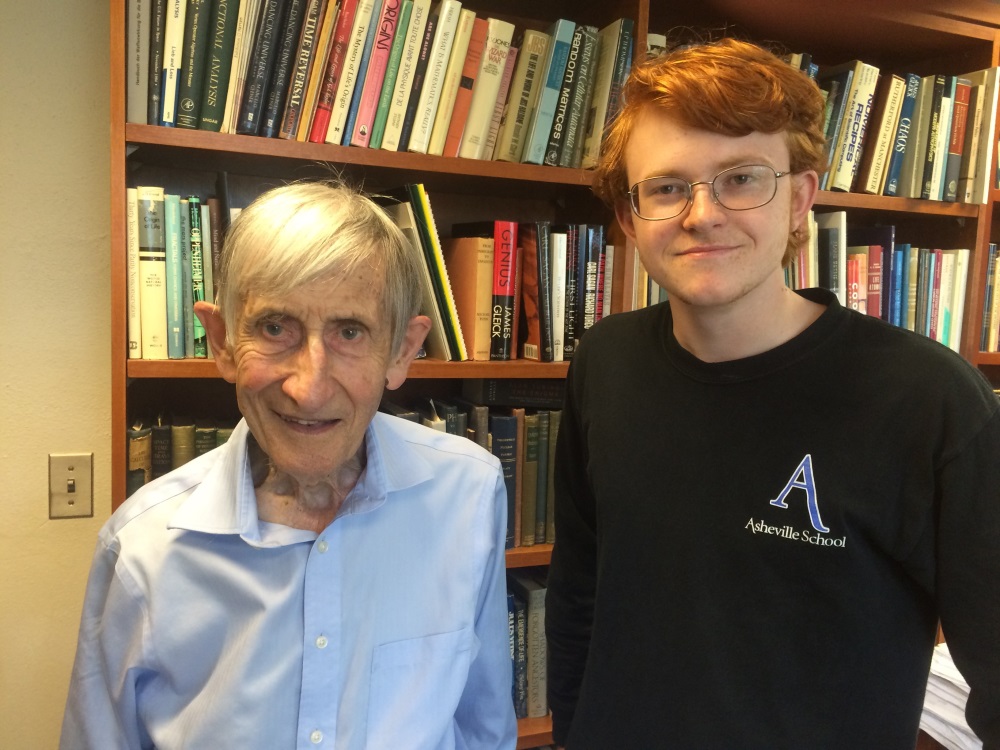Photo: Freeman Dyson with student Austin Morris
I’m not sure which is more impressive. Freeman Dyson’s championing of a new era of quantum electrodynamics, or the scale upon which his formidable intellect had an impact.
In his own words, “My most important contribution was the unification of the Feynman-Schwinger-Tomonaga versions of quantum electrodynamics.”, when asked by Vedant Bhargava what he felt was his greatest scientific achievement. Yet his influence spans from fundamental particles like the electron on the scale of roughly 10−18m to a colossal megastructure dubbed a Dyson sphere that would encompass a whole star. Just for reference, the radius of the Sun is on the scale of roughly 108m. That’s something you need a powerful microscope to see right in front of you vs. something you can with your eyes (do not try this at home) 150 million kilometres away. Dyson’s influence is prevalent at every stage.Not only was he an intellectual behemoth, but he lived through World War II and worked on multiple space-related projects (most notably ‘Orion’). During the war he worked for the Royal Air Force’s bomber command. But, in his own words, his job “had nothing to do with mathematics, either pure or applied”, but this section of his interview is still an interesting read nonetheless. Project Orion intended to create a spacecraft propelled by nuclear power, however, given time to reflect, Dyson now believes “There does not seem to be any type of mission that is well matched to nuclear rockets. Nuclear rockets are too heavy for local missions and too slow for high-velocity missions.”
Something else I noticed that I find particularly amusing, was that the competitiveness between Dyson and his colleagues (Michael Atiyah in this article) appears to have lost none of its vigour despite lasting long over half a century. “Game on”, Dr. Atiyah appears to say as Austin insinuates that Dyson would be double checking Dr. Atiyah’s proof to a million-dollar problem, the Riemann Hypothesis, and solving it in his own right.
Read the full interview coordinated by year 3 student Austin Morris.



